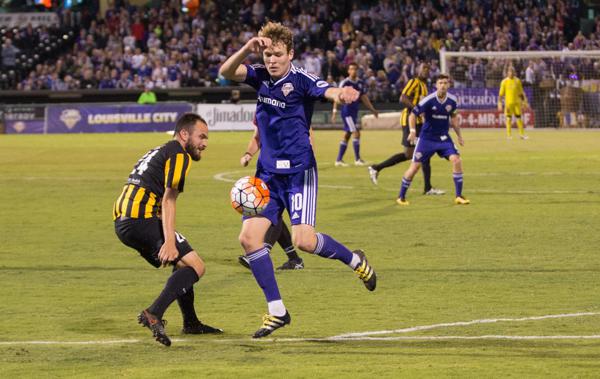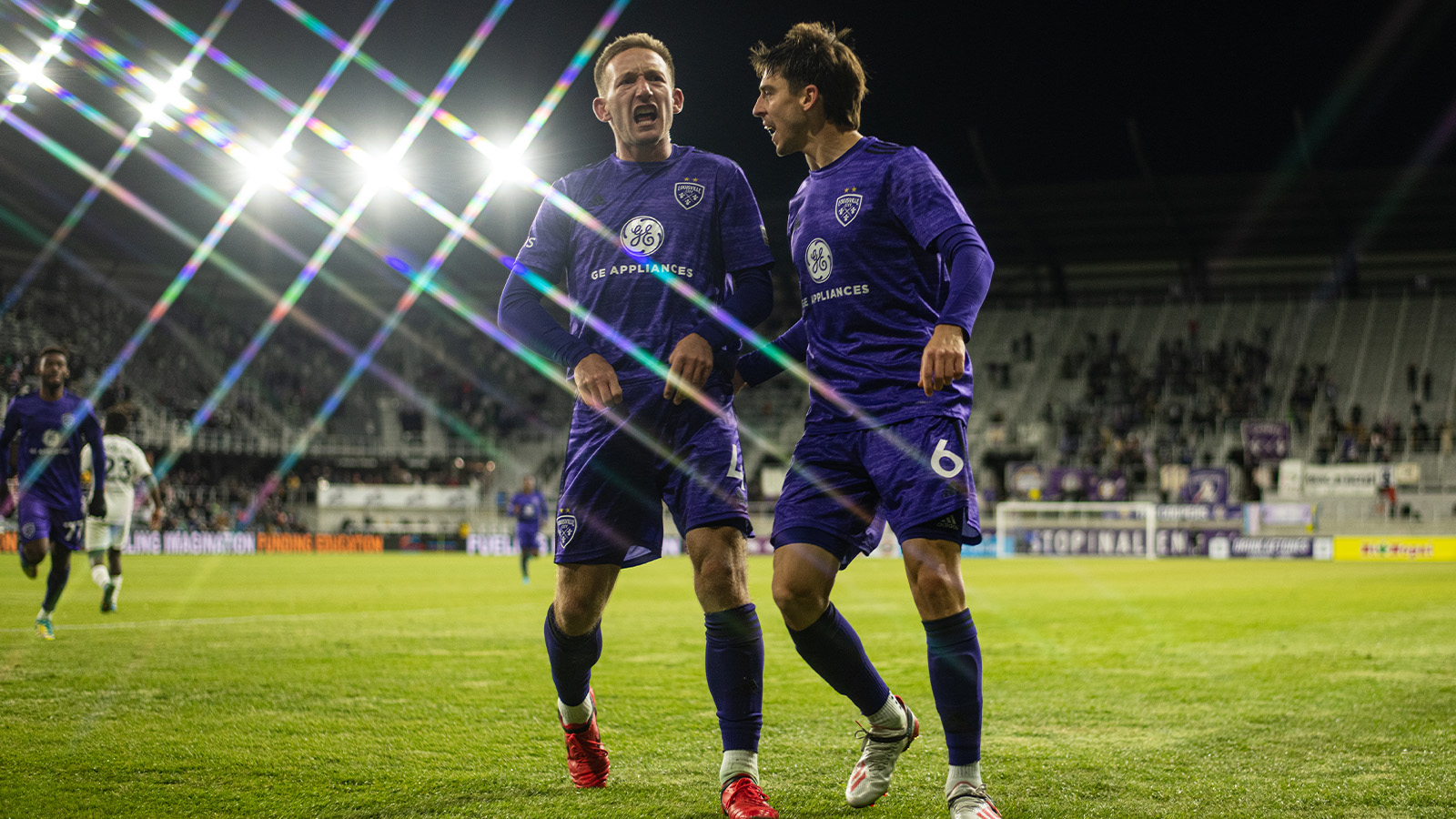As the 2015 season wore on, the pain in the hip of Louisville City FC’s Magnus Rasmussen gradually began to increase. The Danish midfielder, who had emerged as one of the leading lights in the club’s inaugural season, was sent for an MRI.
The news brought news no player wants to hear.
“The doctor said it’s torn and you have a calcium bump that we need to shave off,” Rasmussen said this week.
There was a decision to be made. While the labral tear in his hip was painful, it wasn’t going to suffer any further damage, allowing the option to wait for surgery to repair it in the offseason. Rasmussen chose to soldier on.
“I love to play football, and I wanted to help the team, so last year I wanted to try and get through it, even if I had pain last year,” Rasmussen said.
The end of the season saw a drop-off in his production, though. In his final 11 games – including two postseason contests, Rasmussen notched only one goal and one assist, after seven goals and three assists in Louisville’s opening 18 games of the season. The surgery also meant a rehab process, and time away from the soccer field the type of which Rasmussen hadn’t had to go through since he was a high schooler.
That experience, which saw the 16-year-old Rasmussen make regular hospital visits to check his blood, lasted seven months, but it also gave him the confidence that he could return fully fit to help Louisville this season. With help from Louisville trainer Scott Ritter, Eric McElroy and Pro Rehab in Louisville and Nick Hansen as he returned to Denmark in the offseason, the process was a relatively smooth one.
As he went through the process, Rasmussen also did as much as he could to remain an integral part of Louisville’s squad. If he couldn’t train with his teammates, he could at least stay connected to them away from the practice field.
“It’s always terrible to be sidelined like that,” Rasmussen said. “I want to play with the guys and I want to be part of the group, and you can be a little isolated when you work on your own. When you’re injured, you just do your rehab on the sideline. You’re trying to be part of the team, but it’s easy to be isolated, so I did everything I could to be around the guys as much as possible when we were off the field.”
One of the players Rasmussen has felt connected closest to since his arrival in Louisville has been fellow attacking threat Kadeem Dacres. Roommates a year ago, the chemistry between the two has been evident since Rasmussen returned to action in early June. Dacres provided the assist on the first of Rasmussen’s two goals against Saint Louis in September, and the interplay between the duo was a key aspect of City’s victory against Charleston last Saturday in the Eastern Conference Semifinals of the 2016 USL Cup Playoffs.
“Me and Kadeem, we speak a lot away from the field, and we just have an eye for each other, and a certain respect for each other as well,” said Rasmussen. “We trust each other 100 percent, so I know if I can see Kadeem’s free, he needs to get on the ball, because he can be dangerous and create opportunities for us.”
Rasmussen, meanwhile, is feeling close to the top of his game.
“I feel like I’m getting better and better every game,” he said. “I don’t really feel my injury during games anymore. I have to stretch and keep it loose, of course, off the field, but it feels really good, and I don’t feel it in games anymore. No pain, 100 percent no pain, and it’s getting better and better each time I play with the guys. The chemistry on the football pitch is getting there.”
That chemistry and creativity will be crucial on Sunday evening, as Louisville looks to defeat the New York Red Bulls II in the Eastern Conference Final at Red Bull Arena (6:30 p.m. ET | Match Center). After tasting defeat at the hands of the Rochester Rhinos at the same stage last year, Rasmussen and the others who experienced that loss are out to earn a first trip to the USL Cup Final.
“Last year when we lost in the Eastern Conference Final, we got a lesson,” Rasmussen said. “We learned that it hurts to be that close to our goal, and then it’s taken away from in front of us. We don’t want to repeat that. We know how it feels to lose that close to our goal. That feeling’s deep inside us, and we don’t want to have that happen one more time.”















































































































































































































































































